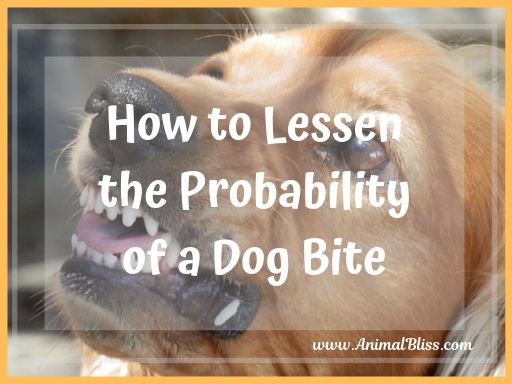How to Lessen the Probability of a Dog Bite
Though dogs are often lovable, drooling, and caring animals, it’s important to be aware of the possibility that a dog can hurt you. Even the friendliest dog may bite if they perceive a threat. Unfortunately, if you don’t know the animal or the signs of aggression, it’s possible to experience a dog bite. Thankfully, there are ways to help lessen the probability of a dog bite from happening.
For one, training a dog early on can help them to be better socialized and disciplined as an adult. It’s also helpful for everyone to exercise caution around new animals instead of assuming they will be friendly, which is especially helpful for children who may not understand the space that a dog needs. For those who own a dog with aggressive tendencies, it’s Essential to practice avoidance. Finally, any dog may bite, so it’s important to understand which situations may trigger that response.
Utilize Early Training
A dog is less likely to be aggressive if they are cared for, socialized, and trained as a puppy. Some dog bites are the result of accidental bites during play, so avoid involving your hands during their play when they are young. Dogs that are socialized properly to experience many different people, places, and things when they are young will feel more comfortable in unknown situations. Isolated dogs may react fearfully in new situations, leaving them to bite out of fear. If you are trying to correct aggressive behavior, be sure you’re seeking out an excellent trainer and not meeting aggressive tendencies with violence. Reward-based training will always create a friendlier dog than creating fear responses in training.
Exercise Caution Around Dogs
One of the best ways to lessen the probability of a dog bite is to avoid approaching an unfamiliar dog. Whether this is a dog at someone else’s house, a stray, or a dog on a leash, it’s best to exercise caution with any dog you don’t know. Be sure to ask a dogs owner’s permission before petting their dog, just in case they have a fear response to being touched. Never startle a dog, tease them, or hurt them. The href=”https://www.animalbliss.com/decoding-your-dog/”>body language of a dog that’s going to bite may be that they are trying to look bigger, with ears up and their hair standing on end. Or, they may shrink to the ground and avoid eye contact to look smaller. They may even show a mixture of the two.
Teach Children About Dog Safety
Exercising caution around dogs is especially crucial for kids. For one, kids may be more likely to invade a dog’s space. They also tend to be louder and more boisterous, which can make a dog feel stressed and overwhelmed. Children are also smaller and can be more seriously injured by a dog bite. For all of these reasons, it’s essential for parents to teach children about being safe around animals. which means their own pet, as well as pets they don’t know. Dogs may bite if they are hurt, which means small kids should know not to crawl on their pet so as not to hurt them and cause them to react. Kids should also know not to get in a dog’s face or hug a dog they don’t know.
Practice Avoidance for Aggressive Dogs
Some dogs have the tendency to be aggressive. Some may have a troubling past, causing them to experience fear and anxiety. Others weren’t socialized, and some feel triggered by new people. Whatever the reason is, dogs that are prone to aggressive responses need their owners to help them by avoiding their triggers.
If you have a dog that is aggressive with other dogs, you can try having a staycation with your whole family, dogs included, instead of taking a vacation and leaving them at a kennel. You can also try tying a yellow ribbon on their leash when you take them in public, which alerts others that your dog is nervous around new dogs or strangers and needs space. Keep your dog in another room with a fun toy when you have visitors. Pinpoint their triggers, and work to avoid them without keeping your dog isolated.
Understand Aggression Triggers
Even the happiest and friendliest dogs can bite if they are triggered. For this reason, it’s important to be aware of common aggression triggers. Dogs that are injured, confused, startled, or have a medical condition may be more prone to bite. A dog that has puppies may bite you if they perceive you to be a threat to her or her puppies.
If your dog tends to get aggressive, work to recognize their triggers. For some dogs, strangers are a trigger, which is why postal workers are trained to fend off dog attacks, and why you should always have a leash or fence for a dog that experiences aggression triggers. If your dog does bite someone, it’s important to help them seek medical attention and understand your potential legal liability.
Many dog bites are the result of an accident or a misunderstanding. A dog may play too hard, a person may not give a dog enough space, or a dog may misread a situation as a threat to them. However, it’s essential to take these situations seriously. Not only should people be more cautious around animals, but dog owners need to take more precautions with their animals as well. By using early training, exercising caution around dogs, teaching children about dog safety, practicing avoidance for aggressive dogs, and identifying aggression triggers, people and dog owners can work to lessen the probability of dog bites.
~~~~~
“How to Lessen the Probability of Dog Bites”
 Guest Writer: Jori Hamilton is a writer from the Pacific Northwest who covers social justice, politics, education, healthcare, technology, and more. You can follow her work on twitter @hamiltonjori or https://writerjorihamilton.contently.com
Guest Writer: Jori Hamilton is a writer from the Pacific Northwest who covers social justice, politics, education, healthcare, technology, and more. You can follow her work on twitter @hamiltonjori or https://writerjorihamilton.contently.com
*
- 4 Tips for Maintaining Healthy Weight for Your Cat - December 20, 2019
- 8 Amazing Benefits of CBD for Dogs and Other Pets - December 12, 2019
- Kibble or Canned Pet Food? What Should Your Pet Be Eating? - December 9, 2019

